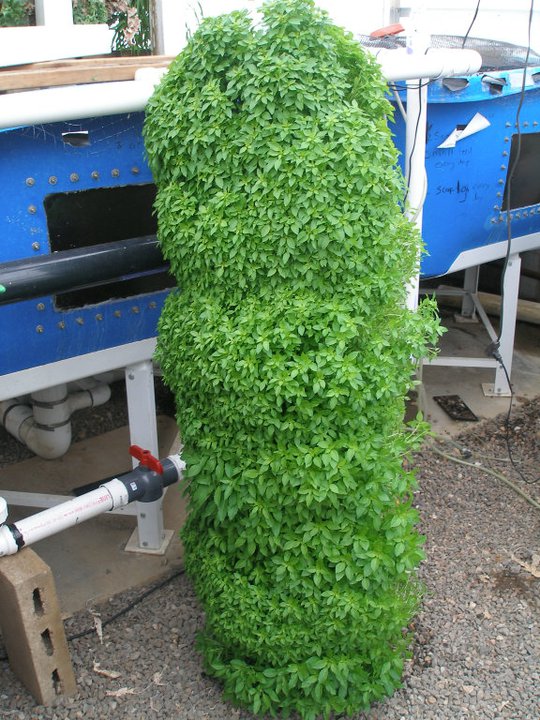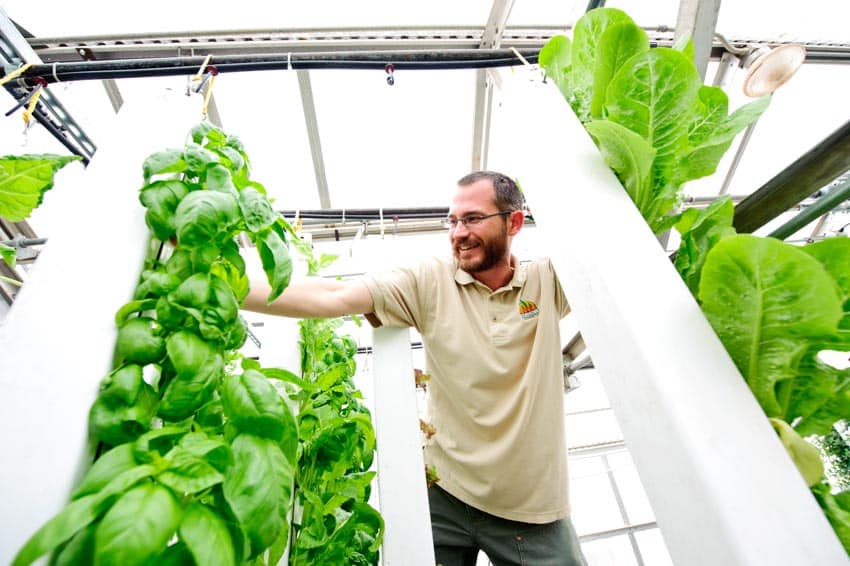Today we’re sitting down with aquaponics expert and Bright Agrotech’s CEO Dr. Nate Storey. So Nate, a couple of questions for you. How did you get started in aquaponics? When and where did this interest in aquaponics help you start Bright Agrotech?
Dr. Nate:
I was always a little bit obsessed with fish. Combine this with my slight obsession with growing food (farming and gardening), aquaponics was a perfect, fascinating fit for me. Throughout my university experience, I was able to study aquaponics as a sustainable, alternative food-production method eventually leading me to start Bright Agrotech.
However, although I ended up spending a lot of time in academia, I would not consider myself a very good academic.
After finishing my bachelors degree, I had basically decided to head off to work in the oil field when one of my advisors came to me and said,
“Hey if you do a Masters degree, I will let you study anything you want.”
I said, “Could I study fish? And, could I study integrated fish production with plant production (aquaponics). He said sure and the thus began the obsession to create a more cost effective, water conservative and more valuable way to grow food… And this also began the six or seven year period of eighty to ninety hour work weeks.
I loved designing, building and testing new equipment and how they would improve my existing aquaponics system, which I see in a lot of folks these days getting into aquaponics.
Once I developed the ZipGrow Tower, I knew we were on to something; something that could empower a lot of traditionally cash-strapped farmers to grow a higher quality product for their customers, improve their margins and ultimately live better.
Nearing the end of my Ph.D studies, I knew the only way to produce ZipGrow towers and empower this new generation of Upstart Farmer was to start a business. Thus, Bright Agrotech was born in 2010.
So, while the idea for Bright Agrotech grew from my time and work in academia, it really started because of my interest and enjoyment in fish, plants and the neat ecological interactions that take place when you combine the two.
“Faces of the Ecological Movement”
Nate Storey and Bright Agrotech Part I
– The EcoTheo Review
In a recent interview with Will Wellman (Editor-in-chief of the EcoTheo Review), Dr. Nate Storey answered many questions including:
Can you talk about Bright Agrotechs specific model and how it separates yall from the rest of the industry?
With the vertical farming what kind of plants can you grow, Im guessing most roots crops cant be grown using it?
Aquaponics is a fairly new concept to many people outside the industry, could you give an overview of it and the benefits of that system?
How sustainable is an aquaponic system compared to a hydroponic system or traditional agriculture?
So Nate, one more question for you…
“Why did you invent the ZipGrow tower and how are they so productive?”

Dr. Nate:
I began building ZipGrow Towers because I had really limited growing space and I noticed in one research project I could get considerably more production per square foot out of the vertical growing technique than a horizontal one.
As I began digging deeper into vertical growing techniques, I quickly found there were a lot of flaws with the various approaches and products on the market. I knew that vertical tower systems were the way to go, but in order for them to really work they needed to be redesigned.
The other “vertical techniques“ out there were simply taking traditional horizontal methods and stacking them on top of one another; not exactly a true vertical design and because of that they ran into countless issues. There are other vertical growing systems out there that utilize aeroponics (growing plants by spraying roots with a superfine mist) but these also run into huge issues with root zone temperatures fluctuations.
I knew if a vertical system was going to work, they had to be media-based to buffer and stabilize root zone temps.
The Matrix Media we ended up designing specifically for these hydroponic and aquaponic applications did exactly that, in addition to anchoring plant roots, filtering solids and adding a massive amount of biological surface area to the system, improving system health.
As you can imagine, it took me a lot of time and energy to find, develop and source the right materials for this type of media. In the end, I engineered a vertical farming tower that was easy to move around, easy to plant and most of all easily taken to market to sell in a living display.
These ZipGrow towers, as we would end up naming them, didn’t just increase our production a small amount, but instead we began producing at least three times the amount we did with traditional horizontal methods such as NFT (nutrient film technique) or gravel beds.
I dont even mess with those types of methods anymore as my time is too valuable. Now I exclusively use our towers to grow for our local community.
It’s been an exciting few years watching other commercial and hobbyist producers have the same kind of success growing more with less space in their ZipGrows. We’re looking forward to a lot more years to come and planning some big things for a brighter, more sustainable future of agriculture.






